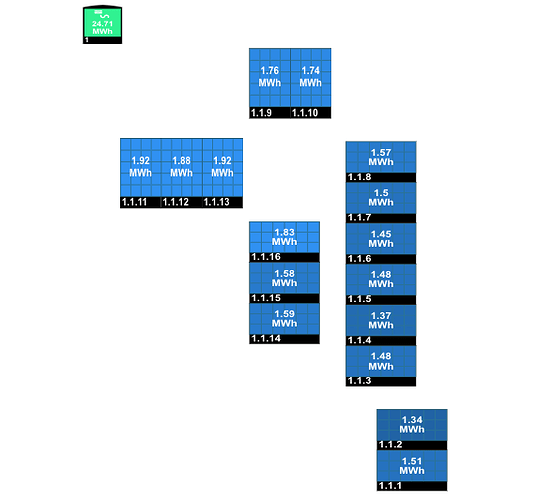Hi Allen, we install PV for a living (along with other renewable energy solutions)
Solar Edge vs string Inverter
It depends upon 3 things
- The shading that the panels will be exposed to
- The panel layout / string configuration
- The inverter chosen.
We will only install SMA Inverters or Solaredge Inverters, with their optimisers (I have both configured on my own installations)
So why SMA vs other inverters? SMA offer
a) Multiple Strings, i.e multiple Multi Power Point Trackers (MPPT)
b) Good range of string sizing per MPPT
c) Global Optitrac that does frequent analysis of the string and is very good at maximising the string output. (search Google for the SMA Global Optitrac published papers if you want to see more for yourself)
As a design principle / golden rule is that a string should only have panels that are a) the same orientation (lansdcape / portrait) b) the same angle of elevation and c) the same direction d) the same panels.
Unfortunately not all installers followed these design rules and cut costs by joinning panels together that don’t fit those criteria and installed cheaper single string inverters.
In MOST cases the SMA inverter is more than adequate and SolarEdge will happily acknowledge that compared to a properly configured SMA inverter then the gains offered by their panel fixed optimisers is minimal or non-existant.
All inverters are not the same, single string, poor mppt perfornance, poor shading compensation, warranties noit worth the epaper they’re written on. So the benefits over other inverters could/might be worthwhile either by replacing the current inverter or by swapping over to SolarEdge
So when do we use SolarEdge
- Complicated Panel layouts
- Complicated Shading
- Smaller systems where SMA don’t offer a multi string inverter (e.g. 2kWp 1kWp East, 1kWp West)
Then there is no discussion 
One other advantage is the low output needed to start generating, some inverters require a much higher string voltage before they’ll start generating.
I’ve had the same cold call three times now and when I ask them to validate their claim against how my systems are installed, they have always admit that they can’t.
They guy who called you was almost certainly a telesales agent working from a script. (though usually pretty well trained)
So there are SOME instances, i.e. a poorly / badly designed, configured or installed system when it may be worthwhile to spend the money on converting to SolarEdge optimisers and inverter.
My system that runs on SolarEdge is actually made up of 16 panels of 5 different types of panels in 3 different orientations and 3 different elevations - ad ideal use of SolarEdge 
As for micro-inverters, being a cautious individual, the smaller the number of on-roof components that could fail, the better. Once again it is only on the very small output systems that we have to install for some developers just to meet building regs (2 - 4 panels) that we install them and once again, our preferred product comes from SMA.
Hope that helps, Rgds Gordon

